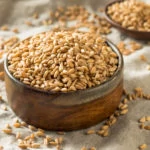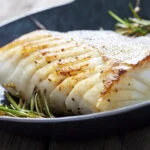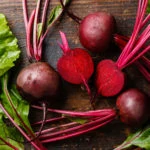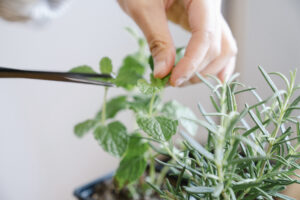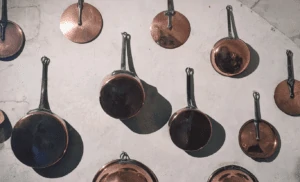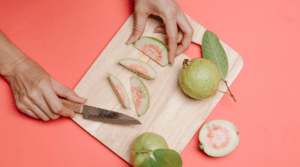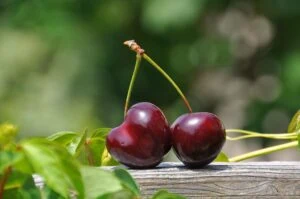These are the tips and tricks for the best way to store fresh produce to make it last longer and fresher. Cut back on food waste and save money with these hacks!
Maybe you’re cutting back on trips to the grocery store to stay indoors and at home. Or maybe you want to reduce your grocery bill every month. Maybe both of these things are true, AND you want to reduce or eliminate food waste at your home.
All of these are excellent reasons to learn the proper way to store fresh vegetables and fruits at home to ensure that they stay fresh for as long as possible. No one wants to reach into the fridge for a crisp apple, only to find that it’s way past its prime and totally soft.
Instead, read on for the best ways to store your fresh produce at home to maximize its shelf-life.
How to Store Fresh Produce: Tips & Tricks
To get the biggest bang for your buck and prevent food waste, follow these simple steps when selecting and storing your fruits and vegetables:
- While you’re at the store filling a grocery cart, take care to keep fruits and vegetables separated from raw meat, poultry, and seafood to prevent cross-contamination.
- Select the firmest and freshest produce possible. Only buy ripe foods if you intend to use them right away. Otherwise, stick with produce you know you will be able to store for several days.
- Put all prepared produce (fresh-cut, ready-to-eat) in the refrigerator. Keep it cold.
- Enjoy precut fruits and vegetables first. Cutting into produce reduces its shelflife, so these items will always spoil faster than whole fruits and vegetables.
- Whenever possible, buy produce that still has the greens or leaves intact. For example, a bunch of carrots with the green fronds attached will stay fresher for longer than trimmed or baby carrots.
- Before and after handling fruits and vegetables make sure your work area and utensils are clean. Same goes for your hands.
- Wait to wash whole fruits and vegetables, including large items, until just before you are going to eat them. Always cut out bruised, discolored, and damaged areas before consuming.
- Fruits and vegetables should be washed under running water, not soaked.
- Produce such as apples, cucumbers and melons that can be rubbed without damage should be scrubbed using clean hands or a clean vegetable scrub brush.
- If able, dry the washed fruits and vegetables with clean, disposable paper towels. If not, dry using cloth towels that will be laundered often in hot water.
- Once cut or prepared to consume, all produce should be refrigerated promptly. Take care to refrigerate leftovers within two hours.
- Always wash unpackaged greens under running water just prior to consumption. Moisture encourages rot, so keep unwashed greens in storage bags in the fridge. Use a salad spinner or paper towels to drain and dry. Keep unused portions bagged and refrigerated.
For more tips, check out this PDF guide to Storing Fresh Fruits and Vegetables from UC Davis.
Stop wasting food and money:
According to the USDA, food waste in the US accounts for a whopping 30-40% of our food supply. You can avoid waste and slash spending by storing produce properly.
Here is the first rule of thumb: keep fruits and vegetables separate. Some fruits, like family favorites apples and bananas, give off ethylene glycol, which speeds up the ripening process and shortens the time you have to consume them. The refrigerator isn’t always the best place to store produce either.
A storage guide for popular produce items:
- Apples: Keep refrigerated. Apples prefer the cold and will last for weeks, if not longer when stored this way. keep them in the crisper drawer for best results.
- Asparagus, Green Onions and Scallions: Trim the ends or roots and store these long vegetables upright in a glass of water, using just enough liquid to cover the bottoms. Then cover the container and vegetables with a plastic bag in the fridge. This technique keeps the cells hydrated and better regulates the moisture thanks to the plastic bag. Take out what you need, as you need it. There is a great source of information from Spoon University: How to Store Green Onions in the Fridge so They Don’t Wilt
- Avocados: Keep avocados at room temperature until they are fully ripened. Once the fruits are fully ripe, store them in the crisper drawer in the fridge. If you want to store cut or mashed avocado, sprinkle the fruit with lemon juice and store it with the pit to prevent oxidation and extend edibility. The lemon juice acts as a barrier to protect the avocado flesh from turning brown from exposure to oxygen.
- Bananas: Store at room temperature. To help slow the process of ripening, pull the bananas apart if you purchased them in a bunch. Refrigerate bananas only after fully ripened or if you’ve cut into one. Premature refrigeration will disrupt or halt ripening. You can also use bananas to help speed the ripening process of other fruits and vegetables, including apples and avocados. To do this, place a banana inside a brown paper bag or a kitchen drawer with underripe produce. After a few days, the unripe should become ripe! This is thanks to a compound called ethylene gas that bananas emit which causes ripening.
- Berries: Refrigerate fresh immediately, and only rinse what you will be using just before eating them. Leave green caps on (Ex: strawberries) to preserve freshness. If you can not eat all of the berries before they go soft, you can easily freeze berries. Simply spread them out on a baking sheet and place them in the freezer for an hour or so, until fully frozen solid. Then transfer the frozen berries to an airtight container or bag and keep them in the freezer for up to three months. Use frozen berries for baked goods, smoothies, or with yogurt in the morning.
- Citrus: Store in the crisper drawer of the fridge. This includes limes, lemons, oranges, grapefruit and other citrus fruit.
- Grapes: Keep cold. Store in the fridge, rinsing off what you want to use before eating. Keep the grapes attached to the vine for as long as possible.
- Green Beans: Store in the refrigerator crisper drawer if you have one. Just before use, rinse the beans n cool water, drain. Cut the ends of the beans off before steaming, grilling, etc.
- Leafy Greens: Store in your fridge’s crisper drawer. Rinse and dry thoroughly before use. Always remove brown or slimy leaves before storage, as these can cause other leaves to become brown or wilted. Place the greens in a loose plastic bag from your store’s produce section or use large storage bags.
- Onions: Store root vegetables like onions in a cool, dry place. Peeled or sliced onions should be stored in the fridge and wrapped tightly in plastic wrap or sealed in an airtight container.
- Potatoes: Do not refrigerate potatoes (both regular and sweet potatoes). Instead, store your spuds in a cool, dry place, such as a cabinet or drawer. It’s important to keep potatoes and onions separate because onions emit ethylene gas, which causes potatoes to sprout.
- Sweet Peppers: Keep refrigerated in a storage bag or container in the crisper drawer. Wash just before consuming. Properly stored peppers will stay fresh for up to 2 weeks.
- Tomatoes: Store fresh tomatoes at room temperature and out of direct sunlight. Do not refrigerate tomatoes, as the cold can cause the fruits to become soft and mealy.
- Cabbage: This is one of the longest-lasting fresh produce items you can buy at the grocery store. Store whole, uncut cabbage in the crisper drawer, and it should last for weeks. Once you cut the cabbage, wrap it closely in plastic wrap and store it in the crisper drawer. If the cut edge becomes dried out at all, you can simply slice off the exposed portion and use the rest of the cabbage as normal.
Now that many of us are no longer hitting the grocery store as often as we used to, we need to shop smarter and ensure that what we buy will last until our next trip. Fortunately, what’s old is new again as we (re)learn how to extend produce freshness and also discover ways to stretch our food dollars.
Put these tips and tricks to use to best store your fresh produce for the longest possible shelf life and maximum flavor and nutrition.


